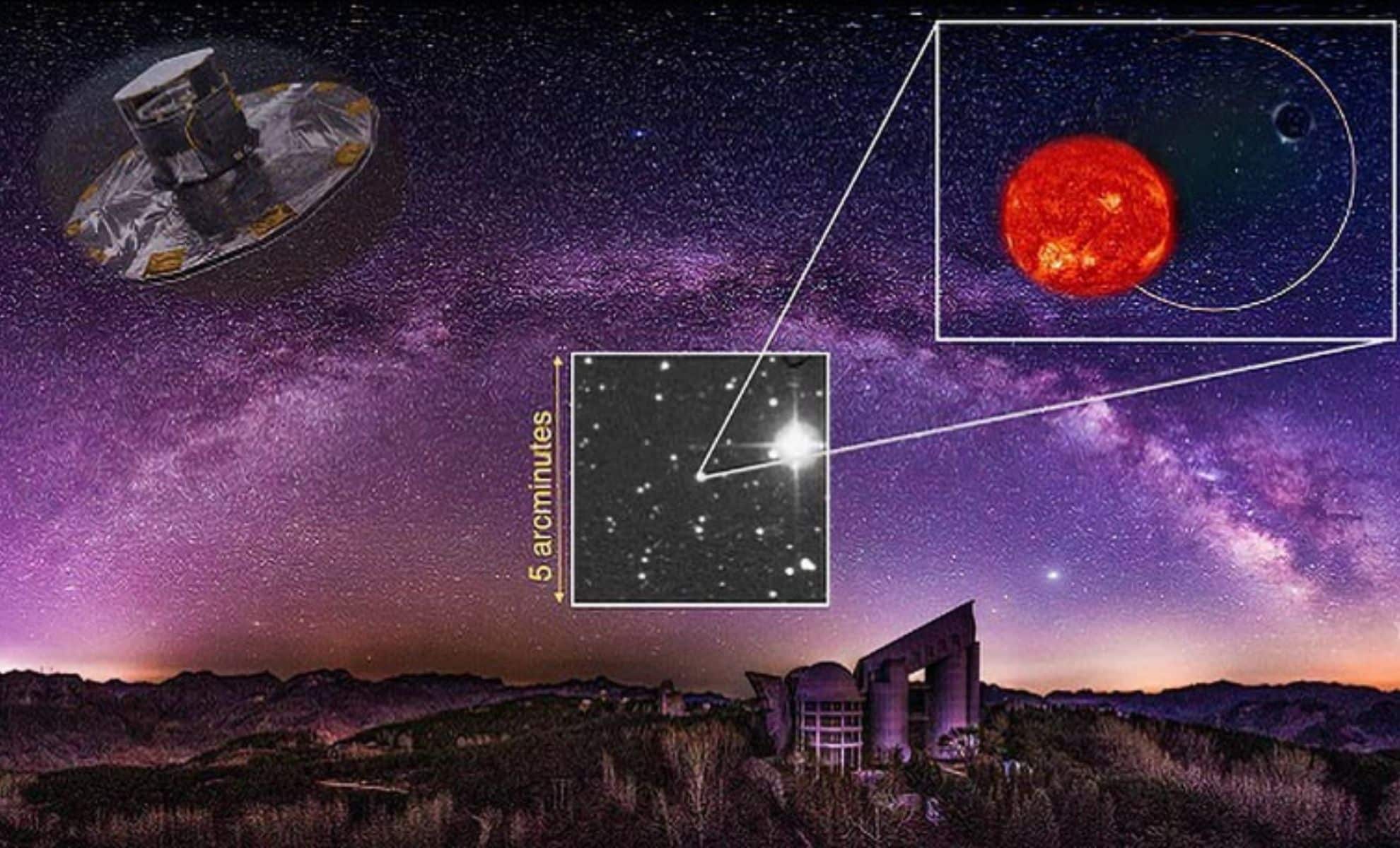Chinese astronomers discovered a a low-mass black hole which challenges long-standing astrophysical theories. This black hole, part a binary system known as G3425has a weight of approx 3.6 times the mass of the Sunby placing it in the elusive mass gap where black holes were previously thought to be absent. The discovery was made using a combination radial velocity measurement a astrometrywhich offers new insights into the formation of black holes and the evolution of binary systems.
Discovery of a black hole with a mass gap in the G3425 system
The black hole in question is located in G3425 binary systemwhich consists of a visible star — a red giant weighing approx 2.7 masses of the Sun-and the black hole’s invisible companion. This discovery is so remarkable that a black hole emits none X-ray radiationa common method used to detect black holes. This suggests that the black hole is in a quiescent state and is not actively accreting material from its companion star. Instead, astronomers used spectroscopic data from Large Sky Multi-Object Spectroscopic Telescope (LAMOST) a Gaia satellite observations to identify a black hole through its gravitational influence on a red giant’s orbit.
This detection method is a breakthrough in the search for black holes that do not appear in traditional X-ray surveys. dr. Song Wangthe main author of the study from Chinese Academy of Sciencesemphasized the importance of this discovery. “In the past, we knew such black holes could exist, but we couldn’t find them because they didn’t emit X-rays,” Wang noted. “Thanks to the combination of radial velocity and astrometric techniques, we now have the tools to find these elusive objects.”
The mass of the black hole is estimated to be 3.6 times the mass of the Sunplace it directly in the mass gapan area where black holes have not been detected before. This is a critical finding because it not only confirms the existence of black holes of this magnitude, but also challenges the notion that some as-yet-unknown process prevents black holes of this size from forming.
Surprising orbital characteristics of a binary system
In addition to the mass of the black hole, the orbital configuration G3425 binary system further complicating existing models of stellar evolution. A black hole and a red giant orbit each other in an almost circular path with period 880 days. The relatively wide and circular nature of this orbit is a mystery to astronomers, as are current models supernova explosions a binary system development predict that such systems should have high eccentric tracksespecially after the violent birth of a black hole.
Typically, supernova explosion The one that creates the black hole is expected to inject significant amounts of energy into the system, disrupting the binary and leaving behind an eccentric orbit. However, the fact that this system has such a long, stable, and nearly circular orbit suggests that there may be additional forces or processes at work that are not yet fully understood. As emphasized by Dr. Wang: “The formation of this surprisingly wide circular orbit challenges current binary evolution and supernova explosion theories. We have a lot to learn about how such systems form.”
This discovery challenges many assumptions about dynamics binary systems a the formation of black holes. It suggests that current models may need significant revisions, particularly to explain how these systems can maintain such stable orbits after a supernova event.
Implications for future astrophysical research
The implications of this discovery extend far beyond the G3425 system itself. Detection and a black hole with a mass gap opens new avenues for research into black hole formation and stellar evolution. For years, the absence of black holes in 3-5 mass range of the Sun led astronomers to question whether some unknown mechanism prevents their formation. Now that such a black hole has been found, scientists will have to rethink their theories about how supernova explosions a stellar mass loss processes contribute to the formation of black holes.
In addition, this discovery highlights the potential for further discoveries using a combined approach radial velocity a astrometry. These methods, which focus on the gravitational influence of compact objects such as black holes on their stellar companions, provide a powerful new tool for searching calm black holes which do not emit X-rays or other forms of detectable radiation. As more data becomes available from tools such as Gaia a LAMENESSresearchers expect to find more hidden black holes in binary systems, potentially revealing new patterns and behaviors in black hole populations.
Moreover, the unusual orbit of the G3425 system raises new questions about the mechanics supernova a development of binary systems. How can a binary system maintain such a wide circular orbit after a supernova explosion? What forces are at play that allow these systems to remain so stable? These are just some of the questions that scientists will be looking for answers to after this discovery.
#Astronomers #discovered #rare #black #hole #defies #astrophysical #theories
